You can contact LEARNZ, part of CORE Education, at:
Postal Address:
PO Box 13 678,
Christchurch 8141,
New Zealand

Watch Shelley's diary cam video.
Kia ora koutou,
You were lucky enough to be able to spend the night out at the K131 field camp and catch up with the work the scientists are doing out on the sea ice.
The ambassadors were excited to be camping on sea ice, especially in the comfort of heated shipping containers rather than tents. Out in the field you need to know how to reduce your impact on the environment. Brett talked to you about how to manage this. A lot of your drinking water was brought from Scott Base when the camp was being set up. This means you don’t have to spend hours melting snow. The sea ice has salt in it but not as much salt as sea water because salt is squeezed out when ice forms and is only left in small pockets. Some of this ice can be melted and used for washing dishes. The scientists won’t have a hot shower until they are back at Scott Base.
Resource use in Antarctica
The K131 team has to make sure they don’t leave anything behind when they pack up their camp. All rubbish, human waste and equipment must be removed. You even had to learn how to use a pee bottle! Rubbish is sorted according to whether it is recyclable in the same way as it is at Scott Base. Eventually rubbish is shipped back to New Zealand where it can be recycled or disposed of in a landfill. While you are down here in Antarctica you have had to think about how you use resources. Everything here has either been flown down or shipped in so a lot of energy is used which increases carbon emissions. You are only allowed to have 3 minute showers here at Scott Base. Your water comes from desalinisation where sea water is heated until the water evaporates leaving the salt behind and then the water vapour is extracted and cooled back into a liquid. This process uses a lot of energy.
The motion of the ocean
Craig talked to you about how the oceans move in currents. There are three main types of ocean currents. Tides are one type of current caused by the gravitational pull of the sun and moon on Earth's oceans. Tides create a current in the oceans, near the shore, and in bays and estuaries along the coast. These tidal currents are the only type of currents that change in a very regular pattern and can be predicted for future dates. Winds cause another type of current, known as surface currents. Winds drive ocean currents in the upper 100 meters of the ocean’s surface. The other main type of ocean current happens in deep water. Deep-ocean currents flow thousands of meters below the surface. These deep-ocean currents are driven by differences in the water’s density, which is controlled by temperature (thermo) and salinity (haline). This process is known as thermohaline circulation.
The Global Conveyor Belt
In the Earth's polar regions ocean water becomes very cold and sea ice can form making the water below the ice saltier. The surrounding seawater becomes saltier, because when sea ice forms, the salt is left behind. As the seawater becomes saltier, its density increases, and it starts to sink. Surface water is pulled in to replace the sinking water, which in turn eventually becomes cold and salty enough to sink. This creates the deep-ocean currents which move much more slowly than tidal or surface currents but transport a huge volume of water, over 100 times the flow of the Amazon River. Ocean currents transport heat and therefore moderate our climate. Craig explained that small changes can affect how these currents work. In McMurdo Sound the scientists are measuring a local current or stream of sea water created as the underside of the McMurdo ice shelf melts. Fresh melt water from the ice shelf flows out from under the ice shelf as supercool water forming a current of fresher, colder water. You have discovered that this water can create platelet ice under the sea ice and increase sea ice growth in winter.
How ice can affect movement in seawater
Ocean currents move water but this movement can be changed depending on what the water flows over. Platelet ice is only found in Antarctica and as the name suggests it forms plates of different sizes and shapes. This surface is rough so the sea water flowing past it is slowed down and can form eddies between and around platelets. Craig is measuring this turbulence so he can calculate its effect on the flow of supercool water from the ice shelf. You can find out more by watching the videos.
Art and science
You caught up with Gabby who is an artist working with the science team. Gabby has also been looking at platelet ice. Gabby is measuring platelets and photographing them and hopes that the art she creates will not only help people to understand more about the scientists work but also help the scientists by giving a different perspective. You will find out more about Gabby’s work tomorrow when you return to the K131 field camp.
An historical view
The cloud began to lift as you headed back to Scott Base making it easier to see where you were going on the skidoos. By evening the temperature had dropped but the sky was clear so you made the most of the evening light by heading out for a walk up Observation Hill. This is a great place to get a view out over the sea ice and McMurdo Station, the American base here on Ross Island. You could even see the open ocean out past the edge of the sea ice. This is a place full of history and it made me think about the first Antarctic explorers. A cross was placed here in 1913 in memory of the last members of Robert Falcon Scott’s polar expedition who died on their return from the South Pole in 1912. The wind motivated you to return to the warmth of Scott Base where you could prepare for another big day out on the sea ice.
See you back at the field camp tomorrow,
Shelley, the LEARNZ field trip teacher.
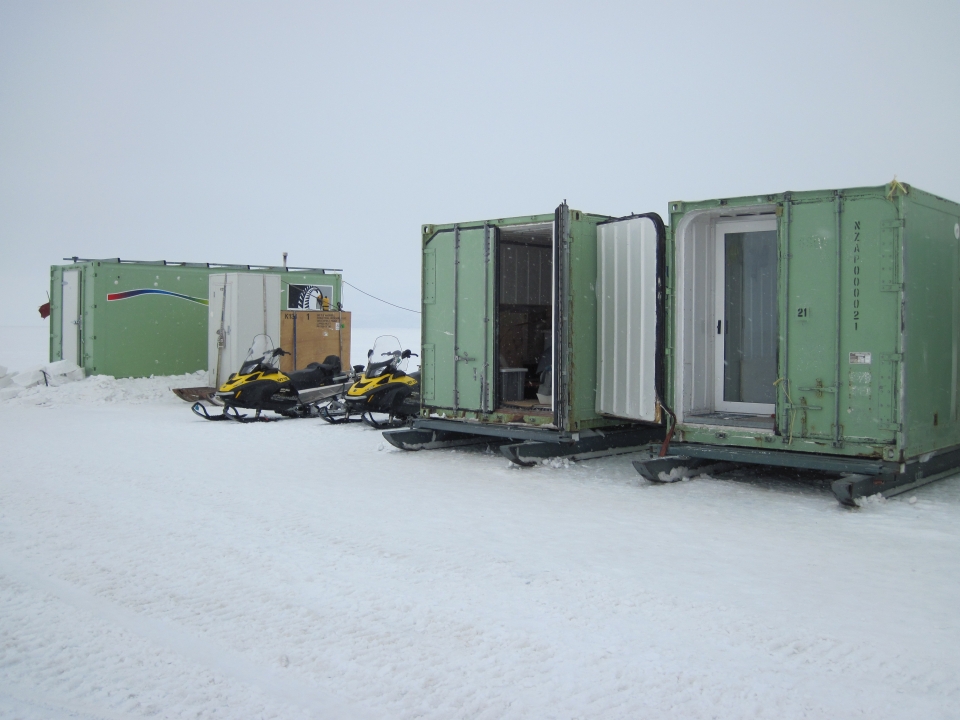
You were lucky enough to be able to camp out on the sea ice with the K131 team. The shipping containers gave you a warm, comfortable place to sleep. Image: LEARNZ.
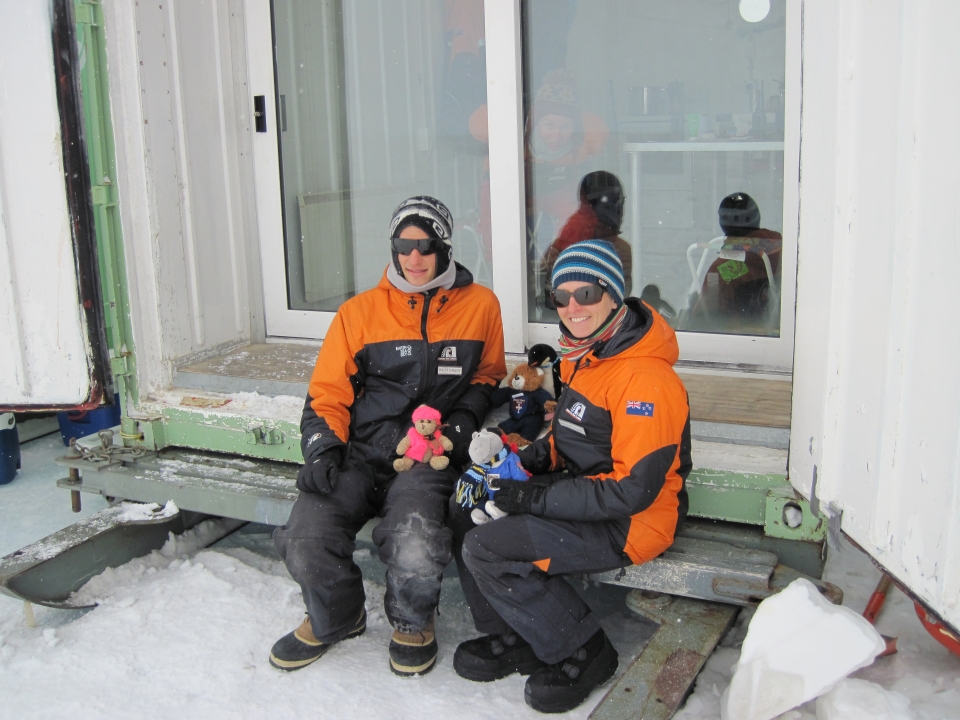
Brett talks to Shelley and the ambassadors about setting up a field camp on sea ice. Who can you see in the background? Image: LEARNZ.
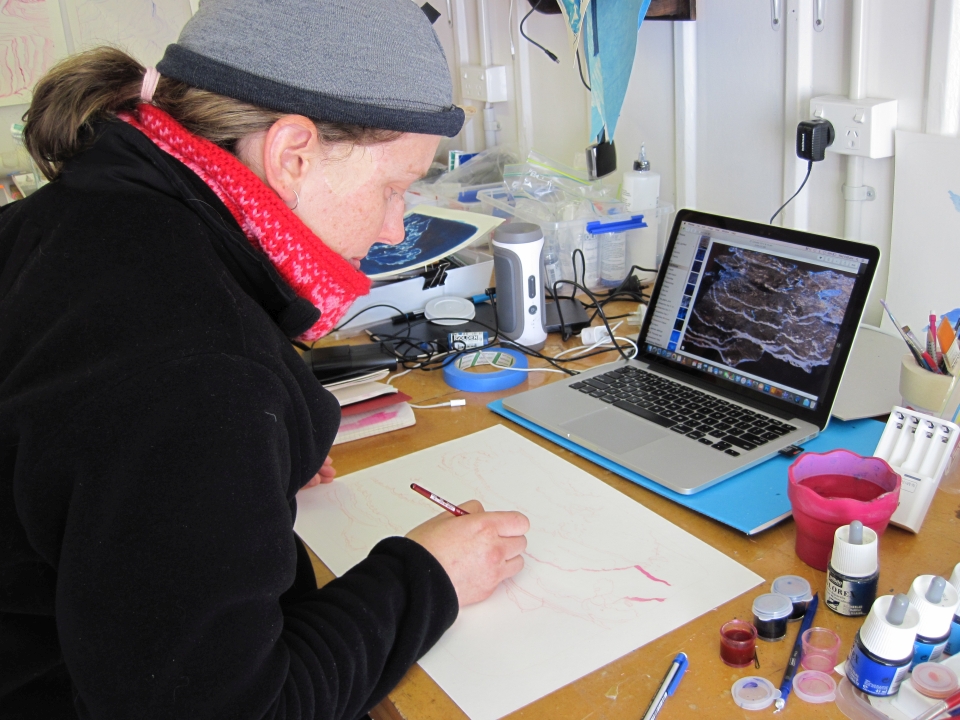
Gabby O'Connor is an artist working with the science team. You can see Gabby painting an ice platelet. Image: LEARNZ.
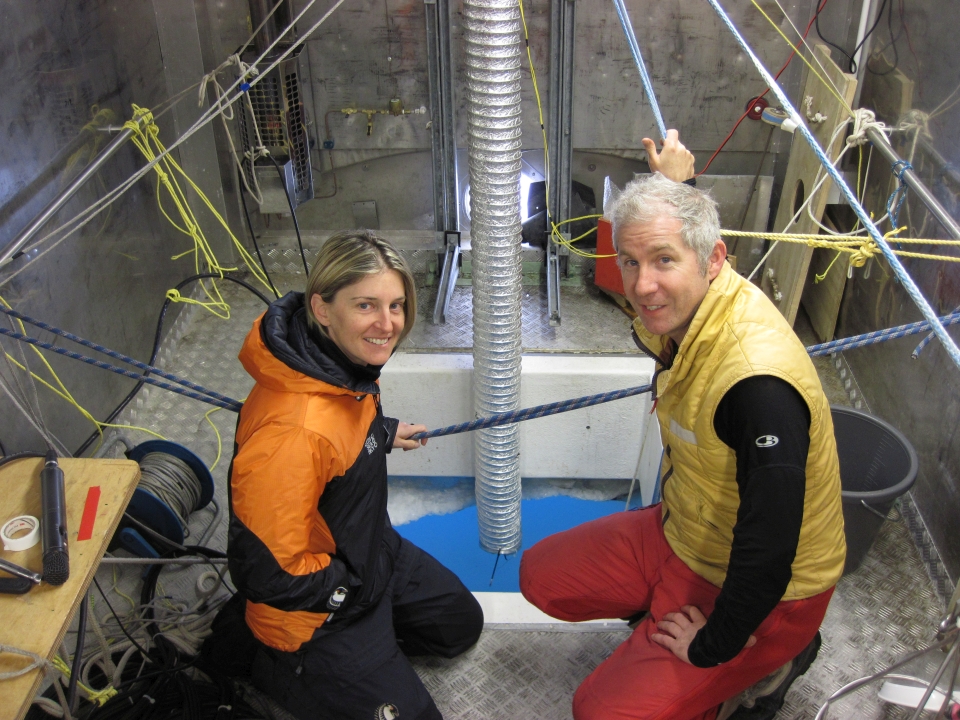
Craig shows Shelley one of the holes in the ice they have melted out so they can make measurements of salinity and temperature. What do you think affects the temperature at which this sea water freezes? Image: LEARNZ.
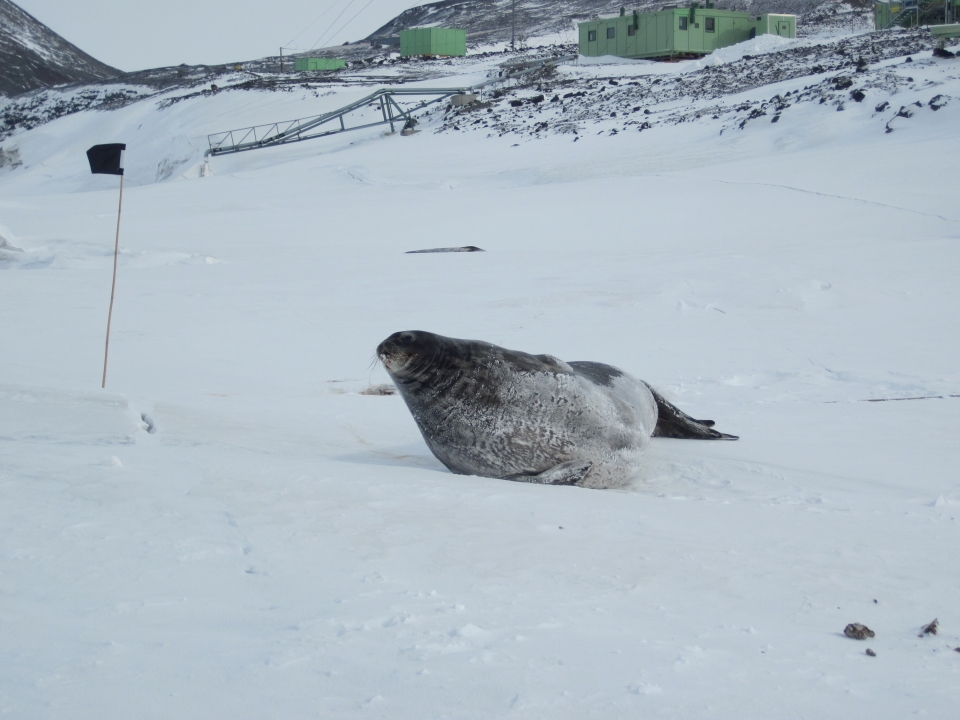
You had to be careful not to disturb this Weddell seal on your way back to Scott Base. Image: LEARNZ.
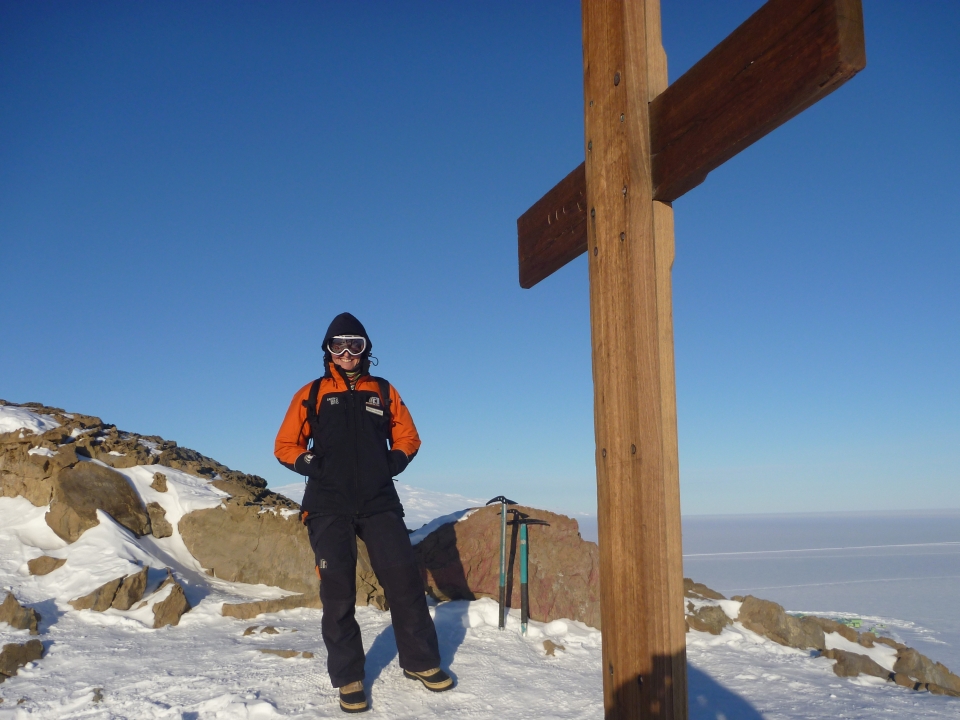
You made the most of the late evening light and hiked up Observation Hill. Who is this cross a memorial to? Image: LEARNZ.
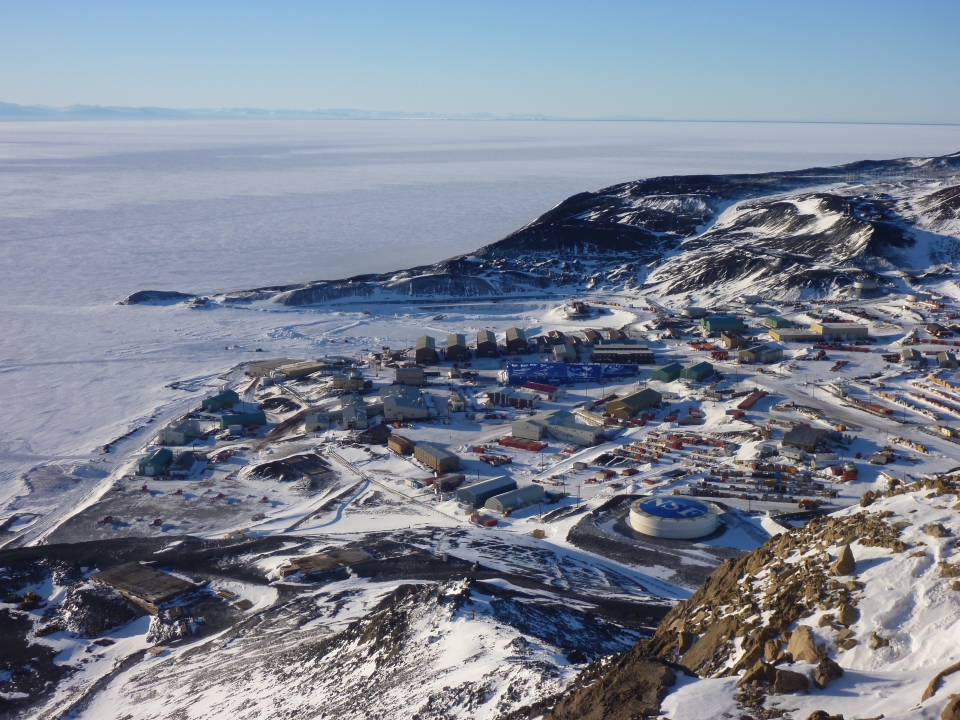
From Observation Hill you can look out over McMurdo Station. Can you see the open water beyond the edge of the sea ice? Image: LEARNZ.
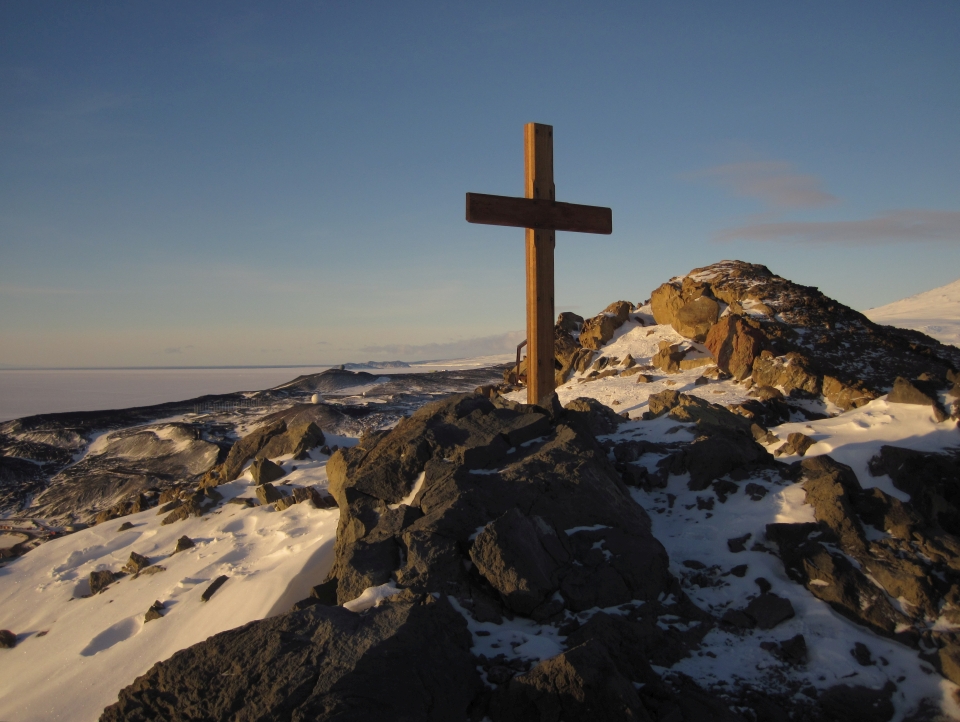
Clear crisp conditions meant that you could see for miles from the top of Observation Hill. Image: LEARNZ.